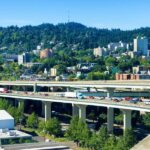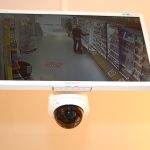Brand Story – The smart city movement is using connected, data-driven technologies to enhance city operations to become greener.
Urban populations are growing rapidly. Today, over half the world lives in cities, and by 2050, over two-thirds of people will live in urban areas. With this growth comes challenges like traffic, energy use, and strained services. However, new technologies offer opportunities to meet sustainability goals while improving safety and quality of life. Video-based systems are one solution helping smart cities worldwide become greener.
Cities today face pressing problems, including worsening congestion, high energy consumption, pollution, public health threats, and limited police resources. The smart city movement uses connected, data-driven technologies to enhance city operations. When powered by flexible video management software, devices like cameras and sensors provide integrated visualization and data insights to improve services, reduce costs, and elevate sustainability and safety.
Connecting the Dots
Sensors across cities produce vast amounts of data on factors like noise, traffic, building energy loads, and water usage. When paired with data-driven video management software, this data gets converted into simplified formats. Dashboards, notifications, and models reveal patterns and opportunities for improvement. Cities can use this intelligence to automate optimizations of transit, irrigation, and other systems in real time, reducing waste while improving services. For example, the City of Vicente López in Argentina reduced its carbon footprint by using traffic monitoring and waste alerts to enhance transportation and collections. Integration between cameras, sensors, and other data points enable coordinated, resource-conserving responses in the city.
As cities get smarter, cameras play a key role in collecting visual data to inform decision making and responses. Today’s open platform, video management software with integrated AI-powered video analytics can detect threats like accidents, infrastructure leaks, fires, and more. Alerts trigger emergency dispatches while continuous data aids investigations. And the analysis of recorded video can reveal macro trends, allowing strategic improvements to optimize operations. For example, city managers in Tlaxcala, Mexico combined smart cameras with analytics to cut incident response times and decrease congestion and emissions.
Key integrated sustainability applications include:
Environmental monitoring: Cameras, air quality sensors, and analytics provide extensive inputs citywide. Central monitoring correlates pollution spikes with potential causes like chokepoints or facility incidents, enabling quick and appropriate response. Other uses include auditing sustainability policy compliance and scheduling maintenance.
Waste and water management: Smart trash bin sensors can detect real-time fill levels, so managers optimize truck routes to only empty full containers, reducing fuel waste, noise, and emissions. Cameras help managers easily monitor water levels and flood conditions to better manage water conservation and safety.
Traffic optimization: Cameras, video analytic software, and sensors leverage data like vehicle detection to optimize signal timing by adjusting light cycles based on real-time volumes, alleviating congestion.
Bike lane use: Video sensors track cyclist traffic counts and patterns, allowing cities to prioritize investments where designated routes are overcrowded versus underutilized. Path enhancements incentivize cycling for short trips, facilitating green, emission-free mobility.
Pedestrian support: Analytics and sensors can also track pedestrian traffic patterns, enabling the strategic expansion of walkways, crosswalks, and trails to incentivize walking and biking.
Supporting sustainability calls for versatile software that brings together video and sensor data, GPS information, and more, into a single, manageable, and understandable view. Open platform video management software offers cities the flexibility and integration capabilities needed.
As cities accelerate smart infrastructure deployments to boost sustainability and quality of life for growing populations, open platform video systems will serve an increasingly vital role. Smart video technology empowers cities to meet their goals today while setting a future-proof foundation for a safer, smarter, greener future.
Visit Milestone for more information.
Brand stories are paid content articles that allow Oregon Business advertisers to share news about their organizations and engage with readers on business and public policy issues. The stories are produced in house by the Oregon Business marketing department. For more information, contact associate publisher Courtney Kutzman.




